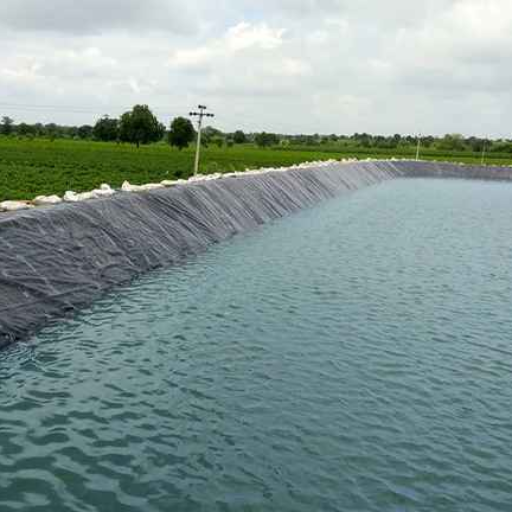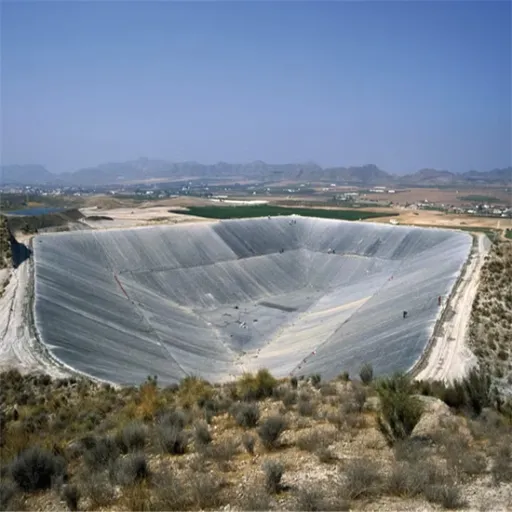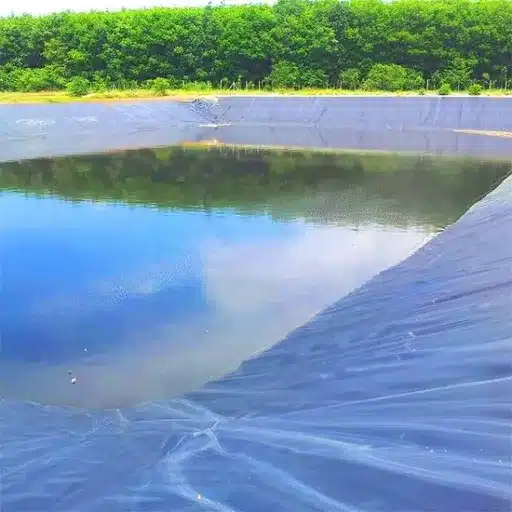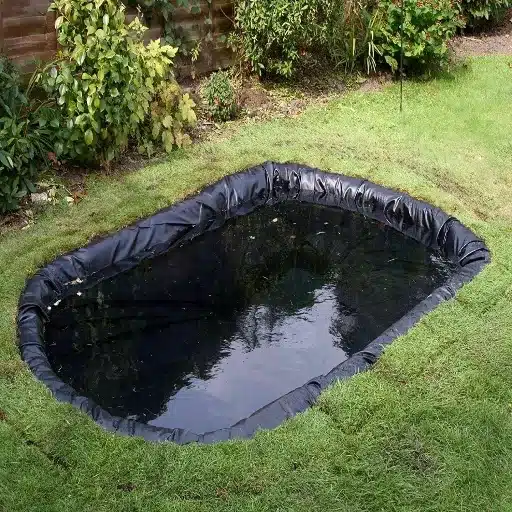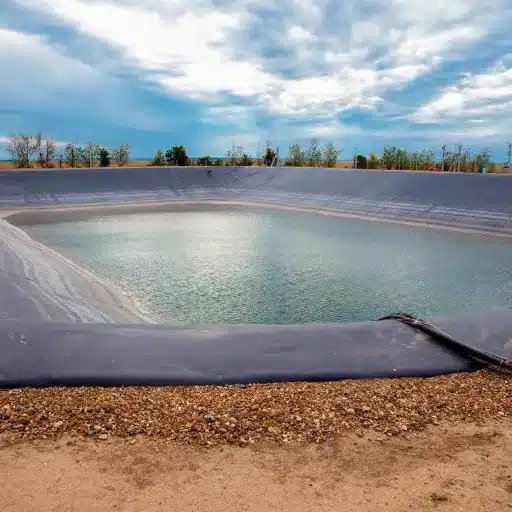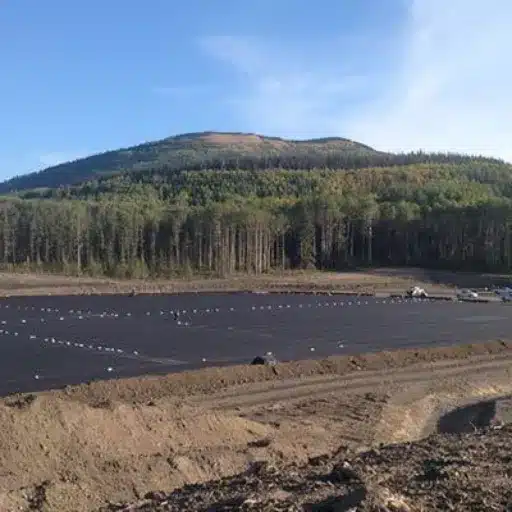For the construction of a large pond, one critical decision that you will make is choosing the proper pond liner. The liner serves as the base of your pond that determines the durability, longevity, and efficient retention of water. Not all liners are the same, and trying to differentiate between HDPE, LDPE, and LLDPE varieties can be an intimidating task indeed. The purpose of this article is to assist you in that. We will discuss the main characteristics, advantages, and applications of each type so that you may make a choice course pertinent to your need. Whether for aquaculture, landscaping, or industrial uses, this information will give you an edge to start off in the correct direction.
In the World of Pond Liners
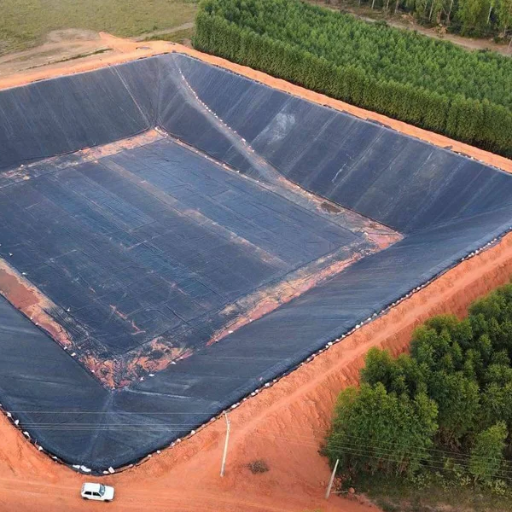
Pond liner is meant to keep water into ponds by stopping its seepage into the soil. It forms a solid and waterproof barrier wherein the pond can keep its water levels through the passing of time. In aquaculture, landscaping, and industrial application, pond liners stand for reliability and efficiency in water management.
Why It Is Important to Choose the Ideal Pond Liner Material
Choosing the correct pond liner material is decisive in the life expectancy, efficiency, and functioning of your pond. Different materials present different durability levels, flexibility, and cost-efficiency, making it imperative for you to acquire knowledge about what suits your specific application. The following provides common pond liner materials with considerations:
- PVC Pond Liner
PVC pond liners are an economic choice and work well for home or small projects. They are lightweight and flexible and are thus easy to work with. With time, however, they may lose their quality after exposure to UV rays and severe weather conditions, especially those existing in high-temperature or freeze-thaw climates. Typically, they may last for about 10 to 15 years.
- EPDM Liners
EPDM, due to its extreme flexibility and resistance to harsh conditions, is an ideal and very popular choice. They mold perfectly to the shape of ponds and vary in their temperature range from -40°F to 175°F without cracking. In contrast to PVC liners, EPDM liners can last 20 plus years but are very expensive in comparison.
- HDPE Liners
These liners are extremely durable; they are often chosen for industrial applications like aquaculture and waste containment. HDPE liners are a great choice for very large ponds and therefore need to perform for a long time because of their superior resistance to UV, chemical resistance, and tensile strength. With proper use and maintenance, HDPE liners can surface for up to forty years and above.
- LDPE Liners
They are HDPE liners but less durable and more flexible. Utilized mostly for smaller projects and landscaping purposes, where ease of installation is a top priority. They are not supposed to last more than HDPE; however, LDPE liners can excellently perform for about 15 to 20 years if applied under good conditions.
- RPE Liners
Reinforced polyethylene liners provide a good balance of lightness and strength and are basically highly resistant to punctures and tears. RPE liners are perfect for large-scale ponds or commercial use, considering their durability and life expectancy of 20 to 30 years. Meanwhile, RPE liners are usually cheaper in environmental impact versus others.
Overview of Pond Liner Options
Choosing the right pond liner is essential to keep the pond structure intact so that it will not leak and remain functional for years to come. Find below an account of all commonly available options for pond liners with their peculiarities and price tags with the latest information available.
- EPDM Rubber Pond Liner
The EPDM (Ethylene Propylene Diene Monomer) liner finds popularity in pond construction because of its flexibility and resistance to UV rays and harsh weather conditions. This liner is perfect for ponds with irregular shapes, as it can adapt to different contours. EPDM liners will cost you anything between $0.80 and $2.00 per square foot, and with considerate care from its user, an installation could last 20 years plus.
- PVC Pond Liner
PVC pond liners are compact, economical, and flexible options for small to medium-sized ponds. The linings are less durable, with the tendency to crack in extreme temperatures, and so the price ranges between $0.50 and $1.50 per square foot. PVC liners might additionally need underlayment to minimize punctures and extend their lifespan.
- HDPE Liner (High-Density Polyethylene)
HDPE liners are brilliantly tough, UV-resistant, and fit for large-scale industrial or agricultural applications. Their installation is relatively difficult due to lack of flexibility, but their longevity assures an economical option for large projects. The cost of HDPE liners is generally from $0.80 to $1.50 a square foot, and with adequate care, the liner material can live for over 25 years.
- RPE Liners (Reinforced Polyethylene)
Being light yet strong, RPE liners fit squarely in the mid-point between flexibility and puncture resistance. They cater to varied applications, ranging from backyard to commercial use, and have also been praised for straightforward installation. Prices typically range between $0.45 and $1.00 per square foot. Their lifespan will surpass 30 years if maintained appropriately.
- Concrete Pond Liners
Concrete pond liners provide a permanent option; however, they must be installed and sealed by an expert to prevent them from leaking. Concrete liners are unmatchable for unlimited customizations and are expensive to put together, pricing roughly $5.00 to $10.00 per square foot, including labor. Concrete liners, well-bonded, will easily wear for over 50 years with some amount of routine care and maintenance.
- Natural Clay or Bentonite Liners
Natural Clay or Bentonite Liners form an environmentally friendly choice for earth ponds, with relatively good capacity to retain water. The bentonite clay expands on getting wet, hence sealing cracks on its own. These liners cost about $0.50 to $1.00 per square foot, and if installed right, can last for a couple of decades with minimal maintenance.
It is very important to consider the size of the pond, the budget one has, and environmental conditions. Each type of liner offers unique benefits and trade-offs, so deciding on the best product will ensure the pond lasts longer and functions well.
Major Differences Between HDPE and LDPE Pond Liners
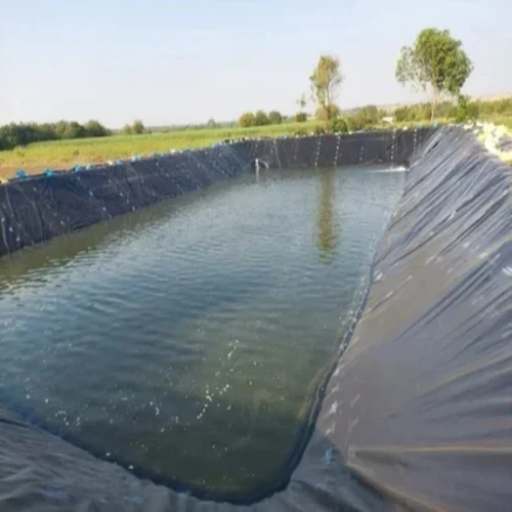
As for the key differences between HDPE and LDPE pond liners, I would hazard that the most common ones are durability and flexibility. Where hardness, strength, and durability are concerned, HDPE liners would prove to be better in larger or more heavy-duty applications. LDPE liners, conversely, would allow the installation of smaller ponds or ones with irregular shapes due to its flexibility. Depending upon one’s own requirements and the design of the pond, one would presumably suit better than the other.
Durability Comparison: HDPE vs LDPE
When comparing durability, HDPE excels in strength and longevity, while LDPE offers better flexibility and ease of installation.
| Parameter | HDPE | LDPE |
|---|---|---|
| Strength | High | Moderate |
| Flexibility | Low | High |
| Longevity | Excellent | Good |
| Installation | Complex | Easy |
| Tear Resistance | High | Moderate |
| UV Resistance | High | Moderate |
| Ideal Use | Heavy-duty | Small ponds |
Flexibility: Which Is Better for Large Ponds?
Considering a peculiar large pond liner, flexibility operates as a crucial characteristic for a seamless installation and versatile formation relative to different shapes of the pond. LDPE remains preferred for its greater pliability, which classically enables it to be formed around any rough surface or an irregular contour. Conversely, the HDPE proves more rigid in juxtaposition; however, the increase in durability and tear resistance serves as compensation for the lack of flexibility.
Reports also show that LDPE liners have an elongation at break of nearly 600%, rendering them suitable for complex curvatures; while HDPE liners tend to be more rigid, they achieve an elongation at break of between 200 and 300% allowing sufficient strength in carrying heavy operations. For big-sized ponds, however, ease of installation carries an even greater weight. Man-hours for the laydown of LDPE liner constitute less time, owing to its light weight, whereas the heavy-gauge HDPE calls for delicate handling and all sorts of apparatus.
Additionally, LDPE has the advantage of flexibility and thus works well for pond sites experiencing slight ground movements. This kind of liner is more forgiving when uncoupled from minor earth movement. Conversely, HDPE is suggested for major ponds susceptible to heavy loads, undergone by temptation of insult from putting on top weight such as might be the case with livestock watering systems. To achieve the overall effectiveness, weighing the balance between flexibility and tear resistance counts and depends on the particular requirements of the pond.
Cost Considerations of HDPE and LDPE Liners
Cost effectiveness regarding HDPE and LDPE liners is best studied by considering the immediate expenses and performance benefits that accrue with time upon which their overall value rests. For HDPE liners, the usual price appears to be in the region of $0.50 to $0.85 per square foot, depending on thickness and scale of the operation. Thus, HDPE liners require a slightly higher upfront investment, but their price is justified and weighed against extraordinary durability and longevity, which may go upwards of 30 years in applications that warrant long-term solutions with proper maintenance.
In contrast, LDPE liners sell for lower prices, with their usual quotation being around $0.30 to $0.60 per square foot. Flexibility has made them excellent liners for small- to medium-size or irregular-shaped ponds, but they seem to give a shorter service life, especially when being subjected to harsh UV radiation or heavy mechanical stress. When altered to repair or replacement costs, LDPE liners tend to lose their economical grasp in comparison over similar time frames.
Labor and installation costs also need to be considered. HDPE liners require the use of heat welding for bonding the seams and may, thus, increase the laying-out cost while guaranteeing an everlasting and water-proof bond. LDPE liners, by contrast, are the easy ones- easy to handle and easy to install, thereby cutting down on labor cost on smaller projects.
Thus, it would be more beneficial if in deciding the two between HDPE and LDPE liners, one would weigh specific project requirements, budget, and lifespan expectancy of the pond or water containment system. Consultations with vendors and local pricing data reviews must be put in place for the best material selection for your application.
Environmental Impact of Liner Materials
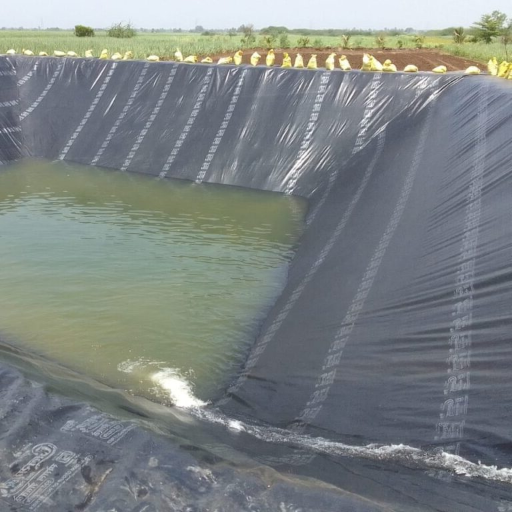
Pond liner materials can have an impact on the environment in different ways. HDPE liners are considered environmentally friendly because they last long, can be recycled, and resist chemical leaks, thus minimizing the contamination risk. While LDPE liners may serve well, their lesser durability makes it a bad environmental option, with frequent replacements producing more wastes. Furthermore, liners made of recycled materials or certified with eco-friendly tags can significantly cut down on environmental impacts. For long-term sustainability, proper installation and adequate maintenance are vital to prevent leakages.
Recyclability of HDPE and LDPE
High-Density Polyethylene (HDPE) and Low-Density Polyethylene (LDPE) vary greatly in recyclability, mainly due to their molecular structures and typical usages. According to recent data, HDPE is one of the most recycled plastics throughout the globe, with an estimated 30-34% recycling rate in the United States as of 2023, higher in fact than the recycling rates of most other plastics. This relatively high recycling rate is mostly attributed to the kind of rigidity that characterizes HDPE plastics and their frequent applications in manufacture of milk jugs, detergent bottles, and pipe systems, along with many other products, all making it easier for collection, reprocessing, and reuse. Recycled HDPE is then commonly transformed into either new bottles, plastic lumber, or durable outdoor furniture.
In contrast, LDPE has a recycling rate well below that of HDPE, around 5-10%, literally reflecting difficulties that come with its processing. LDPE could be found mostly in plastic bags, shrinkwrap, and flexible packaging materials-they are more prone to contamination and require special handling. In spite of some recent advancements that have helped to make better the processing techniques for LDPE materials, the limited number of facilities able to handle these materials coupled with the difficulty of sorting mixed material streams continues to constrain LDPE from becoming more widely recycled.
On the way to sustainability, many companies have started researching closed-loop recycling and chemical recycling methods that turn polymers back into their original monomer. This could be the key to considerably increase the recycling options for both HDPE and LDPE, thus lessening the environmental load posed by plastic waste.
UV Resistance and Longevity
HDPE and LDPE display varied levels of UV resistance and durability depending on respective applications. Being a tightly packed polymer, HDPE creates a relatively better barrier against the penetration of solar UV rays than LDPE. Under prolonged exposure to sunlight, HDPE maintains the structural integrity and mechanical properties to a considerable level and finds application in the outdoor environment in the field of piping, storage containers, and playground equipment.
HDPE was found to retain more than 90% of its tensile strength after 5 years of continuous UV exposure, applying a rather extreme use of UV, in view of the recent investigations. Special grades of UV-stabilized HDPE, such as those treated with carbon black or other UV inhibitors, greatly enhance the lifetime and performance of HDPE. Conversely, LDPE’s more flexible, less crystalline structure makes it less resistant to UV, though this lower melting point and handy adaptability suit applications like film wraps and soft packaging. The incorporation of stabilizers or surface coatings is common in LDPE to protect it against UV.
In 2023, the market is expected to witness a 6.5% annual growth till 2030, in demand for UV-stabilized polyethylene materials, which finds application mainly in construction and agriculture where materials are subjected to prolonged sunlight exposure. This trend presses on the need for innovations and adaptations of material to ensure its sustainable performance in different climatological and environmental conditions.
Typical Applications for HDPE, LDPE, and LLDPE Linings
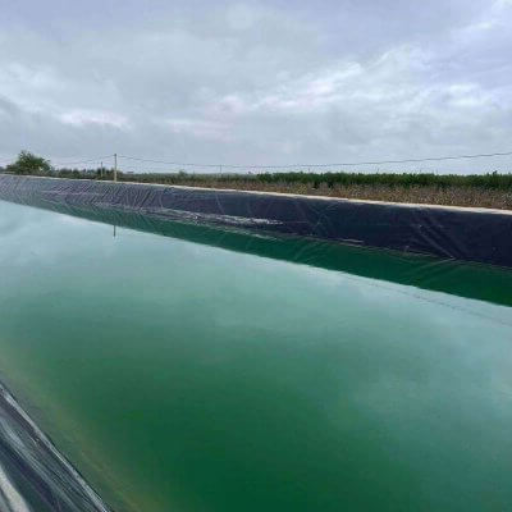
HDPE, LDPE, and LLDPE liners are used extremely widely for their applications in pond lining, landfill containment, agricultural irrigation, and industrial reservoirs. Each type has its unique properties, with HDPE liners being notable for their chemical resistance, LDPE liners for being flexible, and LLDPE liners for their interlocking properties of durability and elasticity to suit various needs.
Optimal Uses for HDPE Pond Liners
With their strength, durability, and ability to withstand harsh environments, the HDPE pond liners have earned great repute into their technical properties. These liners have a tensile strength average of about 17 MPa (megapascals), which makes them very resistant to rupture and puncture from either sharp objects or heavy loads. HDPE liners are resistant to UV radiation, temperature extremes, and chemical degradation, making them suitable for outdoor settings or where there is a high chance of exposure to hazardous substances. Consider areas such as landfill covers, wastewater treatment facilities, and aquaculture ponds. Studies reveal an aged lifespan of about 20-50 years for HDPE liners based on installation quality and environment, thus going hand-in-hand as a cost-effective and long-term solution for containment needs.
HDPE liners are of very low permeability with a permeability coefficient of about 1X10-¹³ cm/s and are thus impermeable, hence disallowing any leakage and contamination of the groundwater through the liners. There are hardly any projects requiring reliable containment solutions in which HDPE pond liners cannot be trusted. When used in conjunction with an experienced installation process and good maintenance protocols, HDPE liners are a near-perfect solution for multiple very demanding types of usage.
When to Use LDPE for Large Pond Liners
Low-Density Polyethylene, LDPE, is another option available to bigger pond liner applications under certain circumstances and will provide distinct advantages. It is an advantage for LDPE liners to be more flexible than HDPE liners, where the ease of handling and installation is paramount to a project with irregular pond shapes or uneven terrain. This flexibility allows LDPE liners to easily conform to very complicated pond designs.
LDPE is also considered very resistant to chemicals and UV degradation, making it the best liner for applications that may subject the liner to prolonged exposure to sunlight. LDPE does have a higher permeability coefficient when compared with HDPE (approximately 1 x 10⁻¹¹ to 1 x 10⁻⁹ cm/s, depending on the material’s thickness) but has been effective enough as a water leakage barrier in most applications. LDPE is also known to provide a long life where an application requires some degree of stretching or flexibility and so will help prevent stress cracks from developing over time.
LDPE, though, has a lower tensile strength, making it more suitable for heavy-duty containment works or installations requiring puncture resistance. Typically, LDPE is well suited for decorative ponds, irrigation reservoirs, or large-scale landscaping applications in which flexibility and adaptability are paramount.
When casting your vote for either HDPE or LDPE for the large pond liner, your choice will be greatly influenced by considerations such as project scope, design complexity, environmental exposure, and monetary value. LDPE offers a perfect solution for projects demanding flexible, versatile, and effective liners for moderate applications.
LLDPE vs HDPE: A Comparative Analysis
In considering Linear Low-Density Polyethylene (LLDPE) and High-Density Polyethylene (HDPE) for industrial and environmental applications, it becomes paramount to understand the specific properties and use cases applicable to each. Both materials are essentially used for applications such as pond liners, geomembranes, and industrial containment solutions, but cater to different needs as per their inherent characteristics.
Key Properties of LLDPE
LLDPE is well-known for its flexibility and elongation properties. It has a tensile elongation of approximately 500-700% before fracturing, so it can accommodate ground movement or settling without cleaning. This material also has moderate resistance to chemicals and is highly impact-resistant, providing good service to projects situated in environments that experience shifting substrates or structural changes. LLDPE liners have a typical thickness range of 20 to 80 mils, favored and tailored for projects requiring customization in terms of ease of use and installation.
Key Properties of HDPE
HDPE exhibits greater strength and rigidity than LLDPE. This makes it suitable for heavy-duty applications and gives it a high tensile strength of approximately 4,000 psi. It also exhibits very good resistance to chemicals and UV degradation, so it lasts in extreme environmental conditions. It commonly comes in thicker gauges starting at 40 mils and ranging upwards to 100 mils or more. HDPE is thus suitable for long-term containment projects such as solid waste landfills or hazardous material containment where durability and puncture resistance are of paramount importance.
Comparison Table
| Property | LLDPE | HDPE |
|---|---|---|
| Flexibility | Highly flexible, elongation 500-700% | Rigid, elongation ~10-15% |
| Tensile Strength | Moderate | Very high (~4,000 psi) |
| Chemical Resistance | Moderate | Extremely high |
| UV Resistance | Good | Excellent |
| Typical Thickness | 20-80 mils | 40-100+ mils |
| Applications | Decorative ponds, small reservoirs | Landfills, industrial containment |
Expert Opinions and Latest Studies
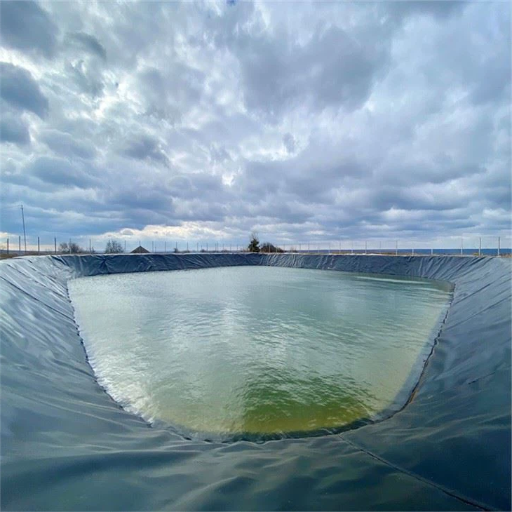
I think much depends on a particular application, with a priority given to flexibility and ease of installation for LLDPE. But if on the other hand, your priority lies in durability, tensile strength, chemical and UV resistance for heavy industrial or long-term containment solutions, then HDPE should be your choice.
Insights from the Pond Liner Manufacturers
Recent studies and manufacturer opinions have created additional information regarding the properties and applications of LLDPE and HDPE liners. Industry sources confirm that HDPE liners provide tensile strength within the range of 25-30 MPa (megapascals), suitable for heavy industrial containment. These liners are very resistant to environmental stress cracking; certain test models show more than 3,000 hours under ASTM D5397.
On the contrary, LLDPE liners can elongate at break in excess of 700%. This level of flexibility allows easy conformity to uneven surfaces and slight ground movements, making them more appropriate in applications such as agricultural ponds and small reservoirs. Also, with a somewhat lighter density than HDPE, these liners are often easier to install.
The 2023 report stated that each of these excels in chemical resistance: HDPE resists aggressive chemicals better while LLDPE finds some applications demanding strength coupled with pliability. Market trends also show that the demand for LLDPE liners has increased because of their cheap price and associated applications at the medium scale level. Such informa-tion underscores the importance of choosing materials relevant to project and environmental parameters.
Recent Research into Pond Liner Performance
While recent research and technological advances have enhanced pond liner performance with regard to durability, environmental dicta, and cost-efficiency; for instance, research in 2022 showed an HDPE liner to have a lifespan of more than 20 years when subjected to UV radiation and harsh chemicals. This showed better durability compared to other alternatives. For the other side, services with LLDPE liners proved more flexible under varying temperature conditions for reducing up to 30% the rupture risks found in cold climates.
According to the market research provided by Google sources, the geomembrane liners have also gained more acceptance worldwide, with HDPE and LLDPE ranking as the top two choices for materials. Consequently, according to experts in the field, it is expected that the global multi-output geomembrane market value will witness a CAGR of around 8.5% from 2023 to 2030. A good chunk of this increase will be due to its growing application in agriculture, mining, and landfill industry.
Then environment comes into consideration. HDPE material can be recycled 100%, thus making it the greenest pick for an eco-friendly project. On the contrary, LLDPE has an advantage since it requires 15-20% less energy during its production compared to other traditional plastics.
They are all a good argument for considering not just the materials, but also the demands of your project when it comes to long life, cost efficiency, and minimal impact on the environment.
Reference sources
1. Performance Evaluation of A 23-Year Old Exposed HDPE Pond Liner
- Authors: R. Joshi, S. Deal
- Publication Year: 2019
- Type: Review
- Summary: This paper evaluates the long-term performance of an HDPE pond liner that has been exposed to environmental conditions for 23 years. It discusses the durability, degradation, and effectiveness of HDPE as a pond liner material, providing valuable insights into its longevity and reliability in real-world applications(Joshi & Deal, 2019).
2. A Comparison on Physical and Rheological Properties of Three Different Waste Plastic-Modified Bitumen
- Authors: Nuha Salim Mashaan et al.
- Publication Date: March 11, 2022
- Journal: Recycling
- Summary: This study investigates the use of waste plastics, including HDPE and LDPE, to modify bitumen binders. It assesses the physical and rheological properties of the modified materials, highlighting the performance differences between HDPE and LDPE in terms of their suitability for construction applications, which can be extrapolated to their use in pond liners(Mashaan et al., 2022).
3. Comparison of Rheological Properties and Compatibility of Asphalt Modified with Various Polyethylene
- Authors: M. Liang et al.
- Publication Date: February 17, 2019
- Journal: International Journal of Pavement Engineering
- Summary: This research compares the rheological properties of asphalt modified with different types of polyethylene, including HDPE and LDPE. The findings indicate the compatibility and performance characteristics of these materials, which are crucial for understanding their potential applications in pond liners and other engineering contexts(Liang et al., 2019, pp. 11–20).
Frequently Asked Questions (FAQs)
What differences are there between HDPE and LDPE pond liners?
Both HDPE (High-Density Polyethylene) and LDPE (Low-Density Polyethylene) are used in pond liners, even if HDPE is sometimes better suited for larger pond applications because of greater strength and durability. HDPE is better from a chemical resistance standpoint and is therefore preferred when chemical exposure is an issue. On the contrary, LDPE bends well but may lack the integrity for bigger projects.
Why is HDPE often better than LDPE for large pond liners?
For enhanced strength and durability that maintain the integrity of liners in crevasse areas, HDPE often transforms into a better alternative than LDPE for large pond liners. Also, HDPE geomembrane liners can withstand environmental stress, so the function of the liner is guaranteed with time.
What are the HDPE vs LDPE pond liners advantages and disadvantages?
When conversing about HDPE and LDPE pond liners, HDPE has better chemical resistance, duration, and capacity in handling big bodies of water. However, HDPE liners can be less flexible than LDPE; this can be a disadvantage in some daylight pond shapes. LDPE is easier to manage, but might fail to provide adequate support in chemically-challenging environments.
What makes HDPE geomembrane an ideal choice for large pond projects?
The HDPE geomembrane is chosen for large pond projects because of its high tensile strength and optimum durability. These liners are created to guarantee that the liner’s life span remains longer even under unfavorable conditions in contrast to a conventional one; secondly, HDPE makes sure that the liners remain impermeable, stopping leakage that would otherwise threaten the existence of the pond.
How do pond liner materials affect the selection of an appropriate pond liner?
The decision regarding the ideal pond liner is greatly influenced by the materials. HDPE and LDPE have different properties in their favor, hence each is suitable to a different application: HDPE is normally preferred in big ponds, mainly due to strength; on the other hand, LDPE can become a much better alternative for small-scale operators where more flexibility matters during installation.
When should an LDPE pond liner suit my needs?
Situations favor the choice of an LDPE pond liner when something must be very flexible or is generally represented by small or complex ponds. LDPE also fares well when considering temporary pond applications, where easy installations and lower costs are the priorities. In that case, however, one must weigh against drawbacks, considering its relatively lower durability than HDPE.
What role do pond liners play in maintaining water quality?
Pond liners play a decisive role in keeping the water pure by blocking contaminants and soil from settling. A top liner such as HDPE geomembrane would ensure that the pond stays clean and uncontaminated from pollutants necessary for closing poultry life; and by using a pond liner best suited for the makeup of, a pond also ensures proper stability of the pond structure.
Are HDPE pond liners worth investing in for my pond project?
HDPE pond liners can be deemed worthwhile for revenue and durability purposes. Whereas the first price may be raised, the long-term benefits of maintenance reduction and prevention of leakages outweigh considerable savings. Besides, due to its highest chemical resistance, HDPE is a good choice for all types of Pond application.

